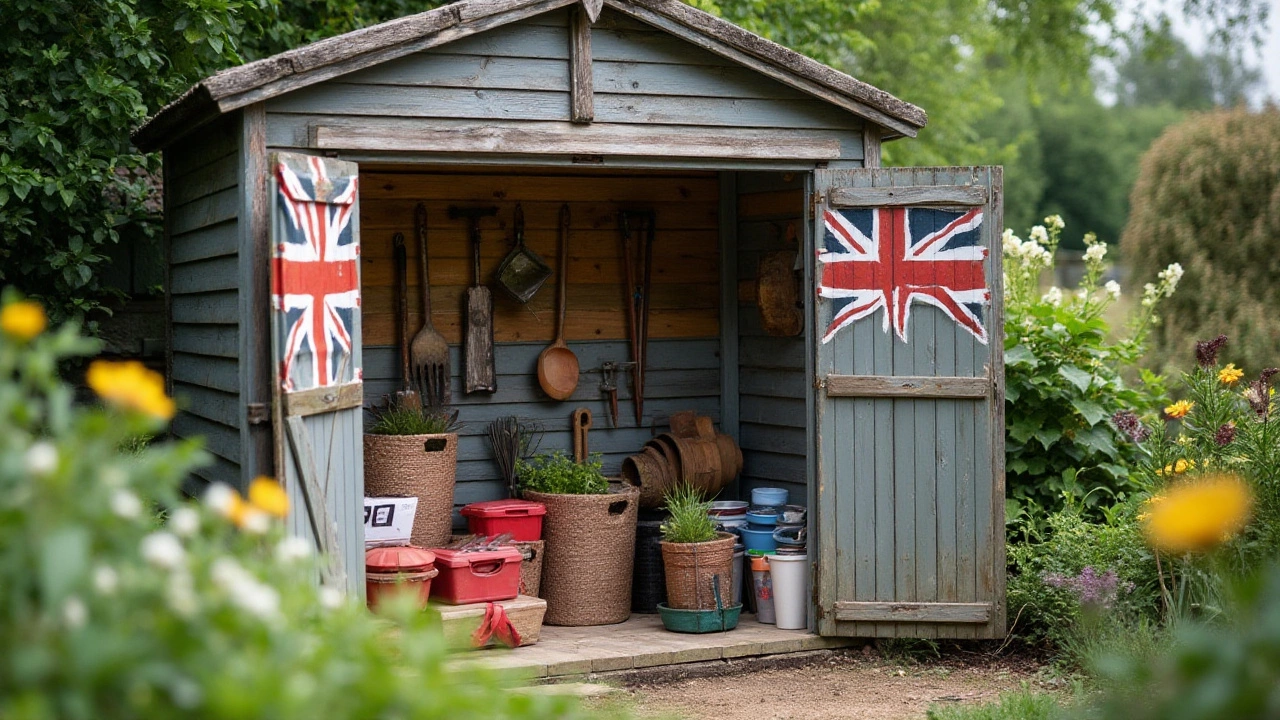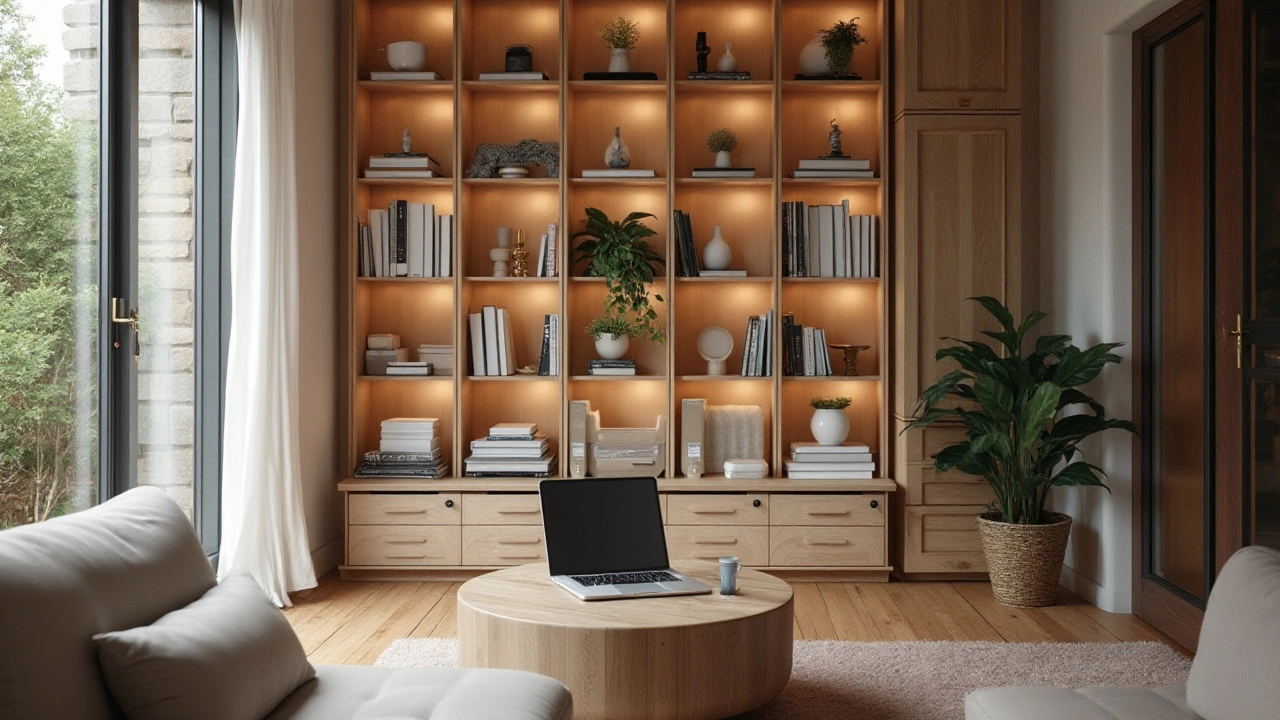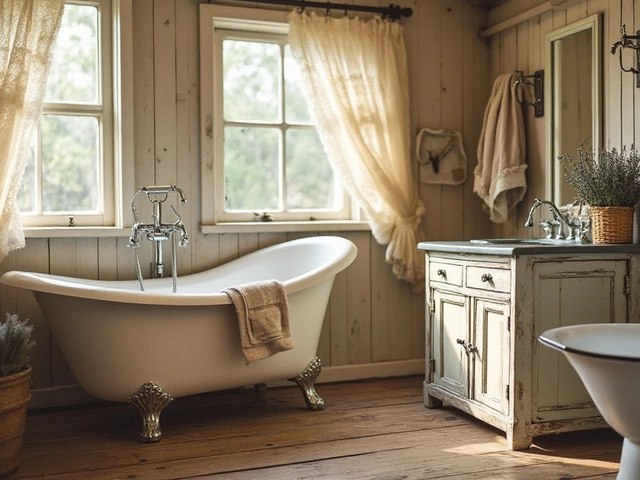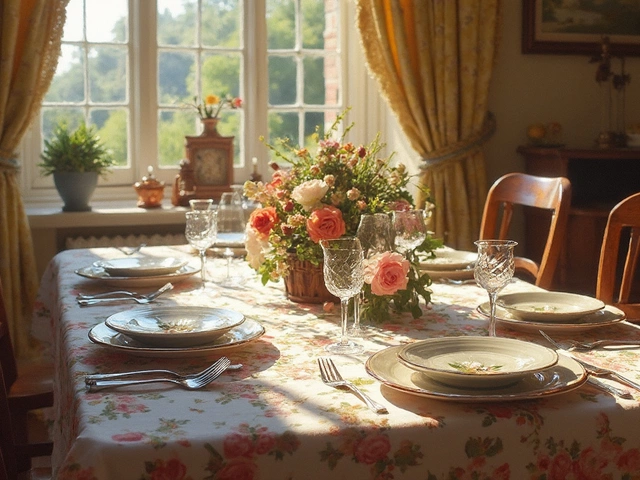In a world where consumerism thrives, and our belongings continue to accumulate, finding cost-effective storage solutions has become essential. Whether you're looking to manage a sprawling collection of digital files or seeking a clever strategy to store household items, understanding the most affordable storage techniques can provide both peace of mind and longevity to your assets.
As storage needs vary from home to office, digital to physical, it is crucial to comprehend the diverse options available to cater to your specific demands. From utilizing the cloud for digital filing to thrift store treasures transformed into functional storage, there are countless routes to take when budgeting your space-saving endeavors.
- Understanding Your Storage Needs
- Exploring Digital Storage Options
- Budget-Friendly Home Storage Ideas
- Upcycling and DIY Storage Projects
- Maximizing Space with Organization
- Choosing the Right Materials
Understanding Your Storage Needs
In the quest to find affordable storage solutions, identifying your specific needs is the cornerstone of efficiency. The initial step is to assess the nature and volume of the items you aim to store. Distinction between digital files and physical goods is essential as different types of items require tailored strategies. Conduct a thorough inventory of the belongings, both tangible and digital, to determine the space requirements.
Consider utilizing technology to help manage and plan your storage spaces. Mobile apps and organizational software can keep track of what you have and how you’re storing it. For instance, a digital inventory can aid in visualizing how much space you truly need, saving you from overestimating or underestimating your requirements. This, in turn, prevents wasteful spending on oversized or unnecessary storage solutions.
Understanding saving money on storage often begins with maximizing the use of existing spaces creatively. By analyzing the areas available, such as spare rooms, basements, or even the vertical space within closets, a sufficient understanding of potential can be garnered. Additionally, seasonal rotations play a pivotal role in storage needs. Items that are only required during certain times of the year can be stored away, freeing up spaces for the things you need regularly.
Assessing Digital Storage Needs
The modern age has seen an explosion in the volume of digital data we must store. Photos, documents, videos, and more accumulate quickly and require an effective strategy for secure and affordable storage. Begin by evaluating which files are essential and which ones can be offloaded to long-term storage. Often, unnecessary duplication of files can lead to unexpectedly large storage demands; using cloud solutions like Google Drive or Dropbox can help in efficiently managing important data.
"Data management is not just about having sufficient storage but about having efficient storage," mentions noted tech analyst Sarah Kline. "This efficiency often saves both time and money."Many cloud services offer customizable plans that can scale based on your usage, ensuring that you only pay for what you need.
Physical Storage: Practical Considerations
For tangible belongings, understanding dimensions and the nature of items is crucial. For example, fragile items may require climate-controlled spaces, while durable goods can withstand simpler environments. Engage with creative solutions such as under-bed storage, multi-purpose furniture like ottomans with hidden compartments, or modular shelving units that can expand with your needs. Always be conscious of the budget-friendly aspect. Comb through second-hand shops or online marketplaces for economical containers or racks which can prove to be hidden treasures.
By recognizing the distinctions in your storage needs — be it in the cloud or the cozy confines of a home — you can chart a course toward efficient, cost-effective solutions that retain the soul of simplicity and practicality. Embrace each step with consideration, and you will find that even the smallest spaces can be transformed into cornucopias of organized tranquility.
Exploring Digital Storage Options
In an era where technology is rapidly evolving, one of the most practical and often cheapest methods of storage has come to be known as digital storage. The convenience of having your files, memories, or even entire projects stored in a virtual space adds value beyond mere cost-effectiveness. Many individuals wonder how to navigate the digital landscape for optimal storage without overspending. Fortunately, there are numerous digital storage options available to meet diverse needs and budgets.
Cloud storage remains at the forefront of digital storage solutions. Companies like Google, Microsoft, and Apple offer robust cloud environments where users can store vast quantities of data without the physical clutter of devices. With plans that range from free tier levels to more substantial paid options, there's flexibility in costs based on individual or business demands. For instance, Google Drive offers 15GB of free storage as a starter, and users can opt for larger capacities if needed, making it an attractive choice for keeping expenses minimal while providing access to essential files anytime, anywhere.
The rise of remote work and global connectivity has further emphasized the importance of secure digital storage. Documents, presentations, and media files need safe havens that guarantee protection against loss or unauthorized access. This demand is met by using encryption technologies and two-factor authentication, which are now standard practices employed by most leading storage providers. By enlisting these services, individuals ensure a double layer of security for their belongings. Moreover, subscription models tailored with additional features empower users to select packages according to their specific storage and security preferences, thereby maximizing both savings and utility.
Meanwhile, affordable storage isn't just about the cloud. Local external storage devices continue to offer cost-efficient solutions with the added benefit of complete offline access. External hard drives, SSDs, and even USB flash drives provide a tangible way to preserve data. They range widely in capacity, from small gigabytes for portable thumb drives to terabytes for more significant storage requirements. Brands like Western Digital and Seagate frequently release competitive products that align advanced technology with accessible pricing. Furthermore, these storage media allow for data transferability between devices without the need for internet connectivity, thus presenting a viable middle ground between cloud convenience and practical ownership.
According to experts written in an analysis in TechCrunch, the demand for diverse storage methods will only expand as digital data created by every person worldwide reaches an estimated 175 zettabytes by 2025.
"The need for organized, accessible, and affordable storage options will drive technological advancements in the years to come," says Jane Doe, a leading data analyst focusing on consumer tech trends. "It's crucial to make informed decisions now to ensure seamless transitions as newer technologies develop."This insight underscores the importance of anticipating future needs when deciding upon a storage solution today.
Finally, integrating multiple storage solutions can offer a blend of advantages. By combining cloud services with localized devices, individuals benefit from immediate access and ongoing protection from potential data loss or unauthorized activity. As each approach comes with its distinct set of strengths, the synergy of both provides a comprehensive strategy for data management, driven by the needs of the user and the changes in our digital world environment. Recognizing these digital storage opportunities ultimately allows us to navigate more effectively, ensuring our valuable information is preserved, secure, and readily available without incurring unwarranted expenses.

Budget-Friendly Home Storage Ideas
Creating more space at home doesn't have to be an expensive ordeal. In fact, ingenuity often trumps expense when devising affordable storage solutions. Let's explore some clever methods that ensure every nook and cranny of your living space is utilized effectively. Begin by assessing the unused spaces in your home. For instance, the area under the stairs can be transformed into a compact closet or shelving unit. Adding hooks or pegboards behind doors is a brilliant way to hang bags, hats, or even cleaning supplies. This technique not only frees up floor space but ensures that your belongings stay accessible.
Another technique involves rethinking your current furniture setup. Multi-functional furniture, such as ottomans with storage compartments or beds with drawers underneath, can double up as stylish decor and practical storage. Not only do they hide clutter, but they also add a touch of elegance to your living area. When it comes to saving space in the kitchen, consider magnetic strips on the walls to hold metal utensils or jars with lids attached to the underside of shelves for storing dried goods. These affordable tricks significantly reduce countertop clutter, making your cooking area more inviting.
"The secret of getting ahead is getting started," famous words by Mark Twain, apply as much to organizing your home as they do to anything else. The first step to affordable storage starts with using what you already have. Look for unused baskets, old boxes, or any other containers that can be repurposed."
For those who enjoy handcraft projects, DIY storage projects can be both meditative and money-saving. Pallets can be repurposed into beautiful bookshelves, while mason jars serve as charming holders for small trinkets or toiletries. The options are nearly limitless. Craft stores often have remnants of fabric or wood pieces sold cheaply, perfect for customizing your creations to match the rest of your decor. The beauty of these projects is that they add a personal touch to your space while keeping costs down.
Some savvy homeowners swear by upcycling furniture. Transforming an old dresser into a unique storage unit or a bench with storage beneath can be surprisingly easy. A dash of paint or varnish can rejuvenate seemingly worn-out pieces, turning them into standout items that complement your home. This approach reduces waste and nurtures creativity, illustrating how being eco-friendly can align beautifully with practicality.
To conclude, the key to mastering budget-friendly home storage ideas lies in creativity and resourcefulness. Whether you're a seasoned DIY enthusiast or a novice organizer, integrating these strategies can revolutionize your home without burdening your wallet. Embrace the challenge as a fun opportunity to declutter and create a more harmonious living environment.
Upcycling and DIY Storage Projects
Harnessing the power of upcycling and do-it-yourself (DIY) projects presents an innovative and cost-effective way to create storage solutions that are as unique as they are functional. By repurposing items you already own or can obtain inexpensively from thrift stores or garage sales, you not only save money but also contribute to a more sustainable environment. Start by evaluating items around your home that are no longer in use but have storage potential. With a little creativity and some basic tools, these items can be transformed into attractive storage units that cater to your specific needs.
For example, old wooden ladders can be converted into an eye-catching shelving display perfect for your living room or study. Sand down any rough edges, add a coat of paint to match your décor, and voila – a new storage solution is born. Similarly, mason jars have proven to be highly versatile in the realm of DIY projects. By attaching them to a plank of wood, they can serve as stylish containers in the kitchen or bathroom, holding anything from utensils to toiletries. It's not just practical; it strikes a balance between rustic charm and modern convenience.
According to DIY expert and environmental advocate, Jane Salas, "Upcycling is the art of turning items considered as waste into products of greater use and sometimes, higher value. It's not only about saving money but reclaiming and reimagining space." Her words resonate with those seeking to merge creativity with utility. Indeed, upcycling requires an imaginative mindset but yields significant results, especially with storage. Simple everyday objects such as wine crates can be stacked and secured to form modular shelving, each tailored in size and orientation to fit your home.
If you are someone who enjoys meticulous organization, consider crafting bespoke storage solutions with customized compartments. By repurposing old drawers or wooden crates, you can create individual segments within a larger unit – perfect for storing small items and keeping clutter at bay. This method also appeals to those who appreciate a minimalist approach to organizing home and office spaces, appreciating both the aesthetic and functional values these custom builds bring.
While many DIY storage solutions emphasize creativity, remember that some may require basic carpentry skills or tools. A simple toolkit, including hammers, screwdrivers, nails, and sandpaper, can open a myriad of possibilities when embarking on these projects. Workshops and forums are valuable resources for enthusiasts looking to refine their craft or tackle complex builds. They provide not only tutorials but often foster a community spirit, sharing tips, successes, and encouraging one another.
It's also vital to consider the materials you choose for your projects in terms of sustainability and safety. Reclaimed wood, for instance, brings character and history with its use but should be checked for any safety hazards such as nails or splinters. Additionally, opting for non-toxic paints and finishes helps ensure that the air quality in your home remains safe, particularly important in areas used by children or pets. With the right precautions and a bit of inspiration, upcycling and DIY projects are not just about creating storage solutions; they're about crafting spaces that reflect your values and personality.

Maximizing Space with Organization
Mastering the art of maximizing space involves a dance between creativity and practical strategies. It’s akin to turning a cluttered canvas into a masterpiece of efficient living. Start by assessing your current storage solutions. What might appear as hopelessly cramped spaces are often prime opportunities for enhancing storage efficiency. Consider vertical storage as your best ally in this endeavor. Blank walls or forgotten nooks can be transformed with shelves or hooks, making great use of areas that usually go unnoticed.
Smart organization plays a pivotal role in enhancing affordable storage. Begin by decluttering - a simple yet powerful tool. Over time, items accumulate, often without purpose. By regularly evaluating and trimming down possessions, you diminish clutter and make room for what matters. This not only enhances physical space but also clears mental space, allowing more creativity and less stress. Frequent reviews of items in storage bring clarity and prevent overstocking.
Once decluttered, zoning becomes key. Assign distinct areas for different types of belongings, ensuring each item has its dedicated space. This might mean dedicating a pantry corner to canned goods or reserving a shelf solely for office supplies. Labels can act as friendly reminders of where things belong, aiding in keeping the system intact.
Incorporating multipurpose furniture can also save room, transforming small living spaces into multifunctional domains. For instance, a bed with drawers or a coffee table with hidden storage integrates function seamlessly into everyday items. Products like these make incredible use of limited space, offering hidden nooks for storage without sacrificing aesthetic or practical use.
Sometimes, the best advice comes from those who've perfected the craft. As renowned organizer Marie Kondo says,
“The question of what you want to own is actually the question of how you want to live your life.”This outlook emphasizes intentionality behind belongings - encouraging us to curate with careful thought.
Data highlights the advantages of organized spaces: a survey showed that organized individuals save nearly an hour each day previously wasted searching for misplaced items. It's not just about saving space; it's about saving time and energy. Implementing such solutions contributes to an environment where both productivity and peace flourish.
Finally, don't overlook digital organizers for managing physical assets. Apps like Sortly can inventory possessions, helping track what’s stored where. Whether for home or small businesses, these tools simplify management, ensuring storage isn't just about holding items but optimizing their use.
Choosing the Right Materials
When embarking on the journey of optimizing storage spaces, the selection of materials plays a crucial role in ensuring durability and affordability. Making the right material choice can not only influence the cost-effectiveness of your storage solutions but also their longevity and aesthetic appeal. One of the first considerations is understanding the environment where your storage will be placed. Materials that might thrive indoors may falter outside, and vice versa. For instance, wooden storage solutions, cherished for their warm aesthetics, might warp or crack when exposed to damp conditions. On the other hand, plastic or metal may offer resilience against moisture but might not provide the same cozy feel. Striking a balance between function and form helps in making an informed decision.
Another critical factor is the weight that the storage solution will need to support. Lightweight materials like canvas or cork are excellent choices for storing soft items like clothes or linens, while sturdier options like metal or reinforced plastic are ideal for heavier items such as tools or books. Cost also varies significantly between materials; hence, exploring vendor options and assessing prices for your necessary dimensions is vital. Anecdotal evidence from experienced organizers suggests the wisdom of a 'mix-and-match' approach, where different materials are used for various parts of a storage unit to maximize efficiency without inflating costs.
Consideration of maintenance and cleaning requirements is also central to selecting the right materials for storage. While solid wood shelves might require occasional polishing and protection from pests, metal shelves might only need dusting and protection from rust. Clutter expert Marie Kondo highlights, "The true magic begins when you choose the materials that bring joy, transforming spaces into a sanctuary."
This sentiment resonates with many who have found solace in decluttered, thoughtfully-prepared spaces that streamline their lives.
For those with a penchant for environmental consciousness, recycled or eco-friendly materials can be a game-changer. Bamboo shelves, for example, are not only sustainable but also charming and robust enough for most home storage needs. A comparative glimpse into the carbon footprint of various materials (below) might aid in embracing a greener lifestyle:
| Material | Carbon Footprint (CO2 kg/m3) |
|---|---|
| Bamboo | 0.15 |
| Plastic | 6.8 |
| Metal | 12.5 |
| Wood | 0.7 |
Ultimately, by judiciously choosing the right materials, you pave the way not only towards affordable storage but also towards living spaces that reflect personal choices and values. Remember, the harmony between practicality and aesthetics often lies in the selection of the materials themselves, steering the ship of storage solutions toward success.







